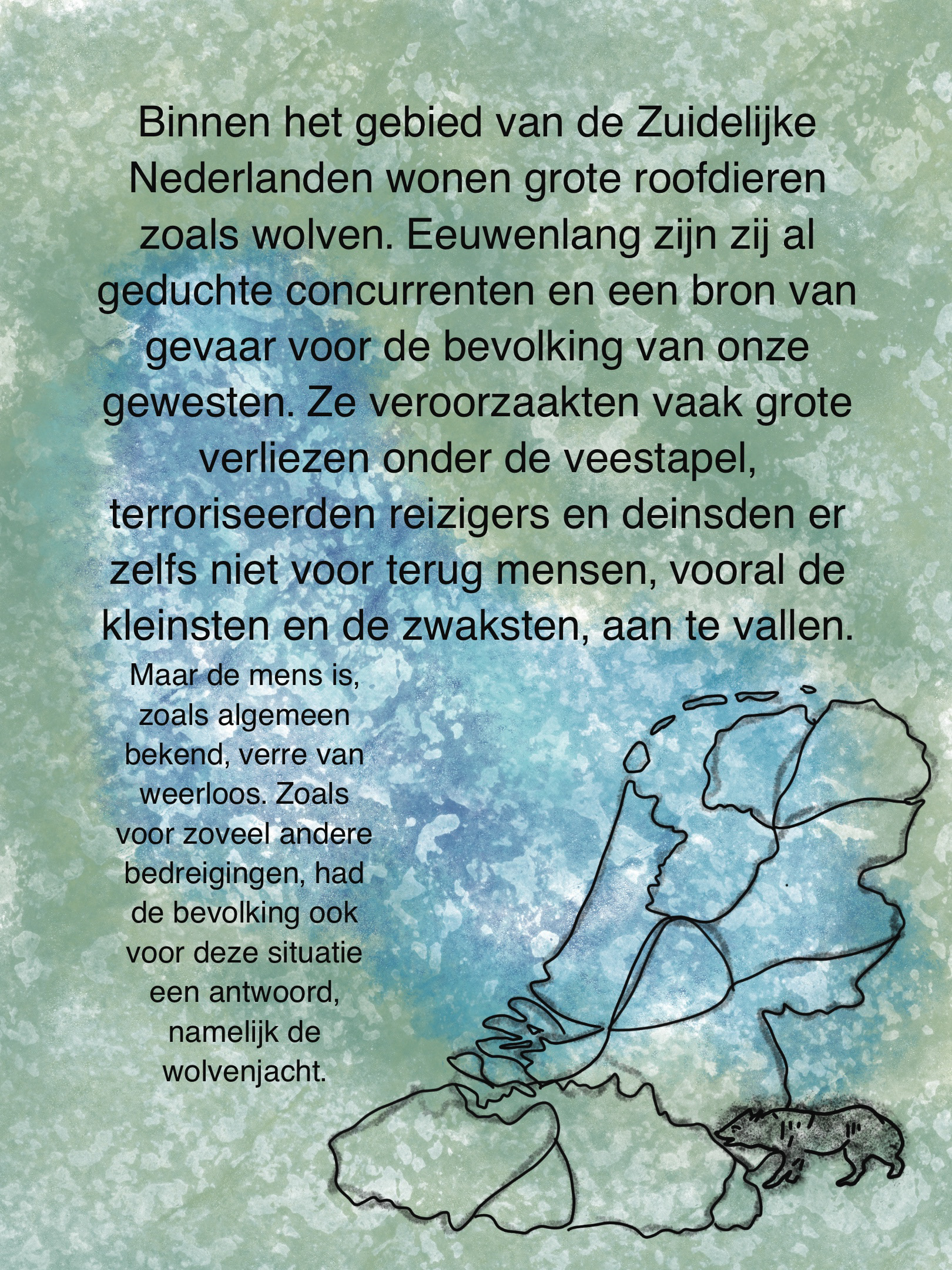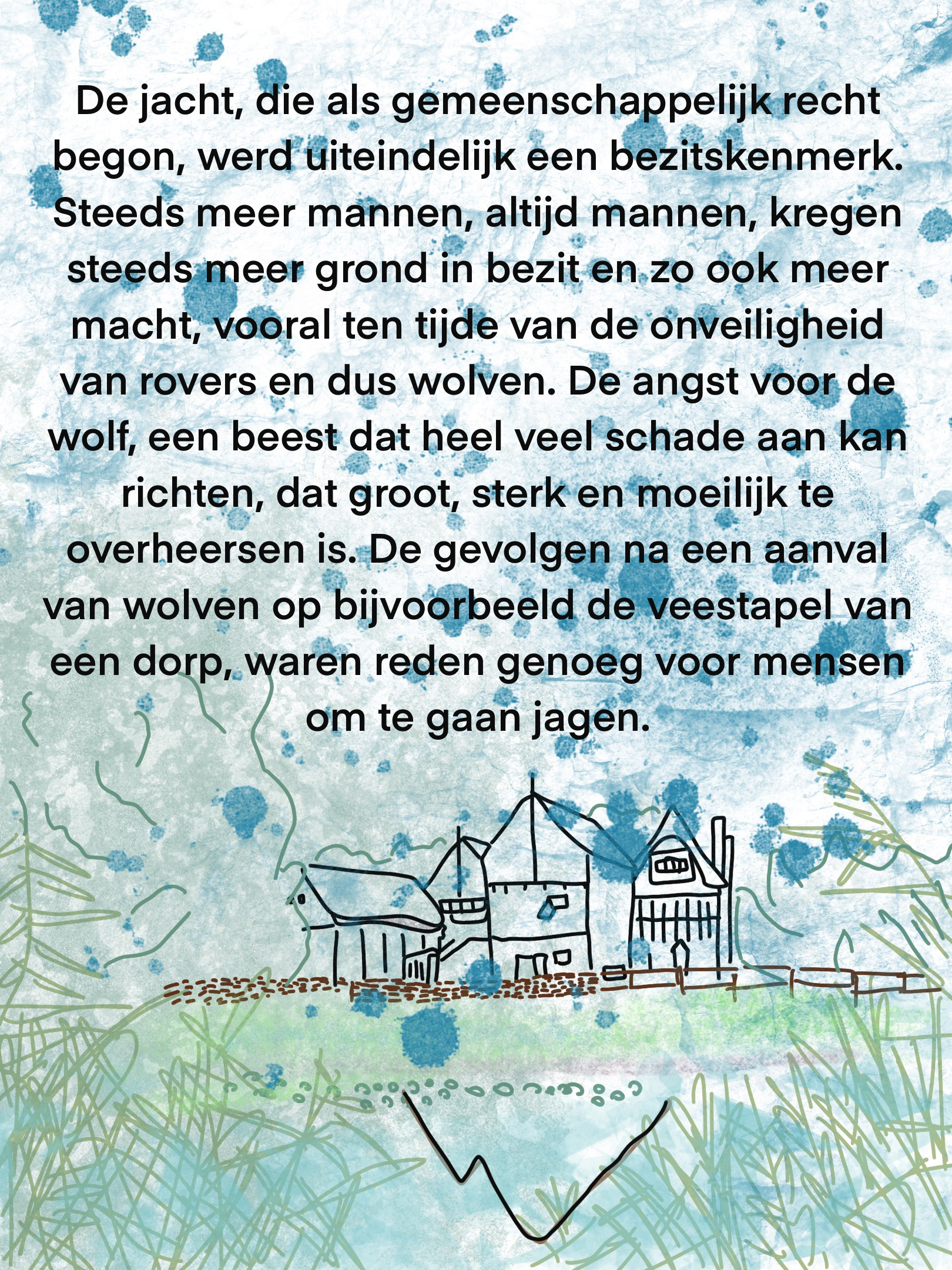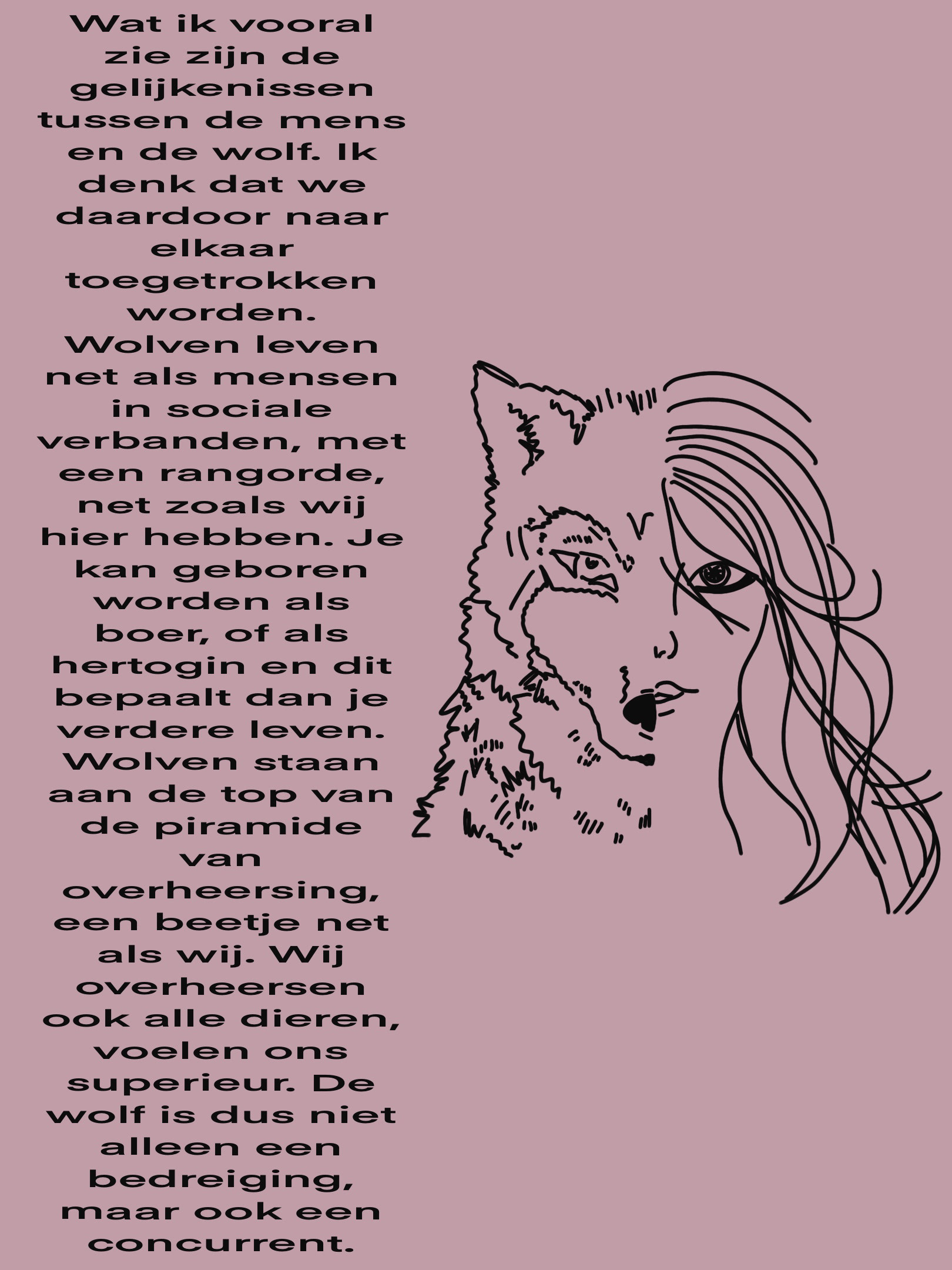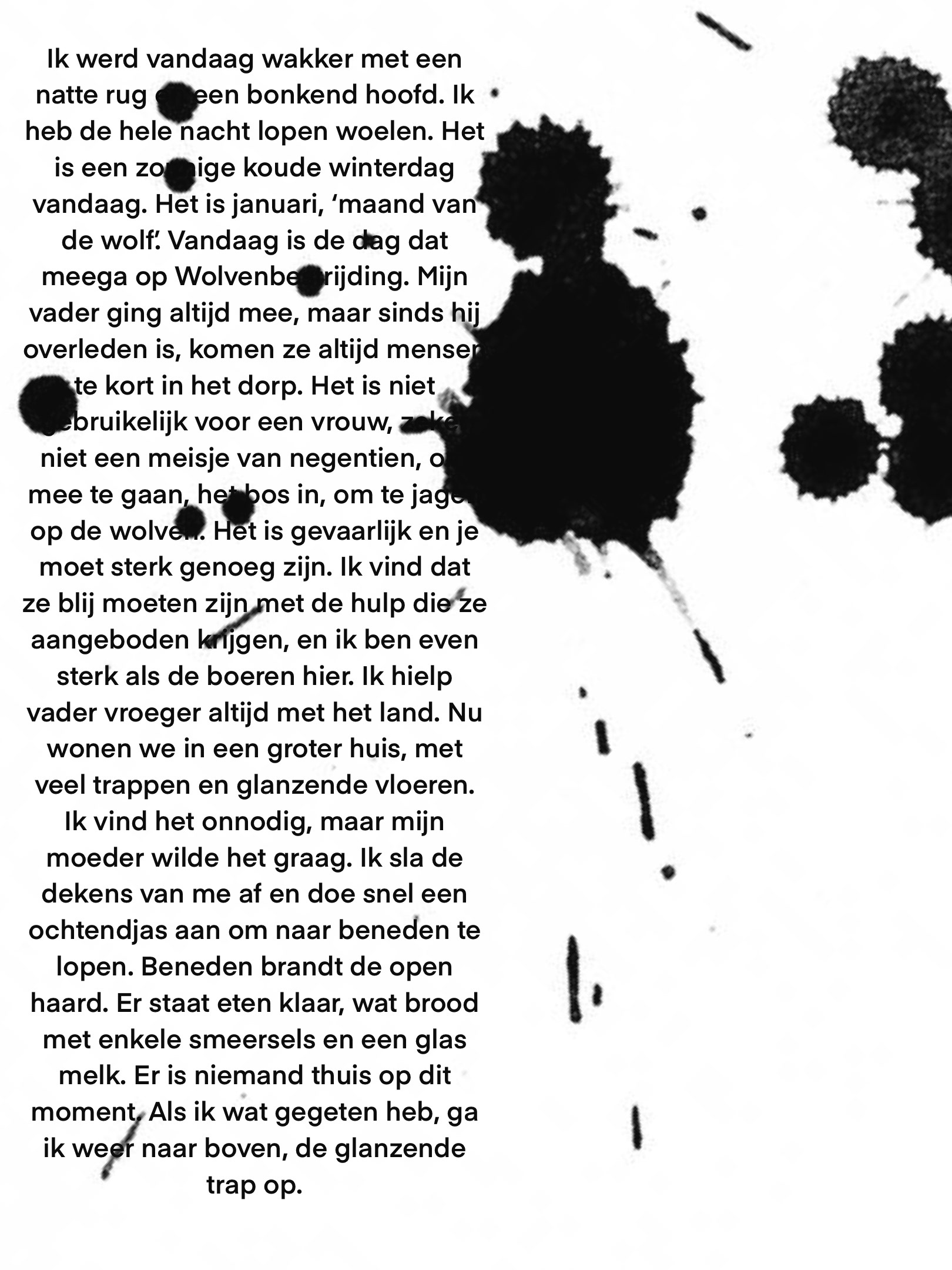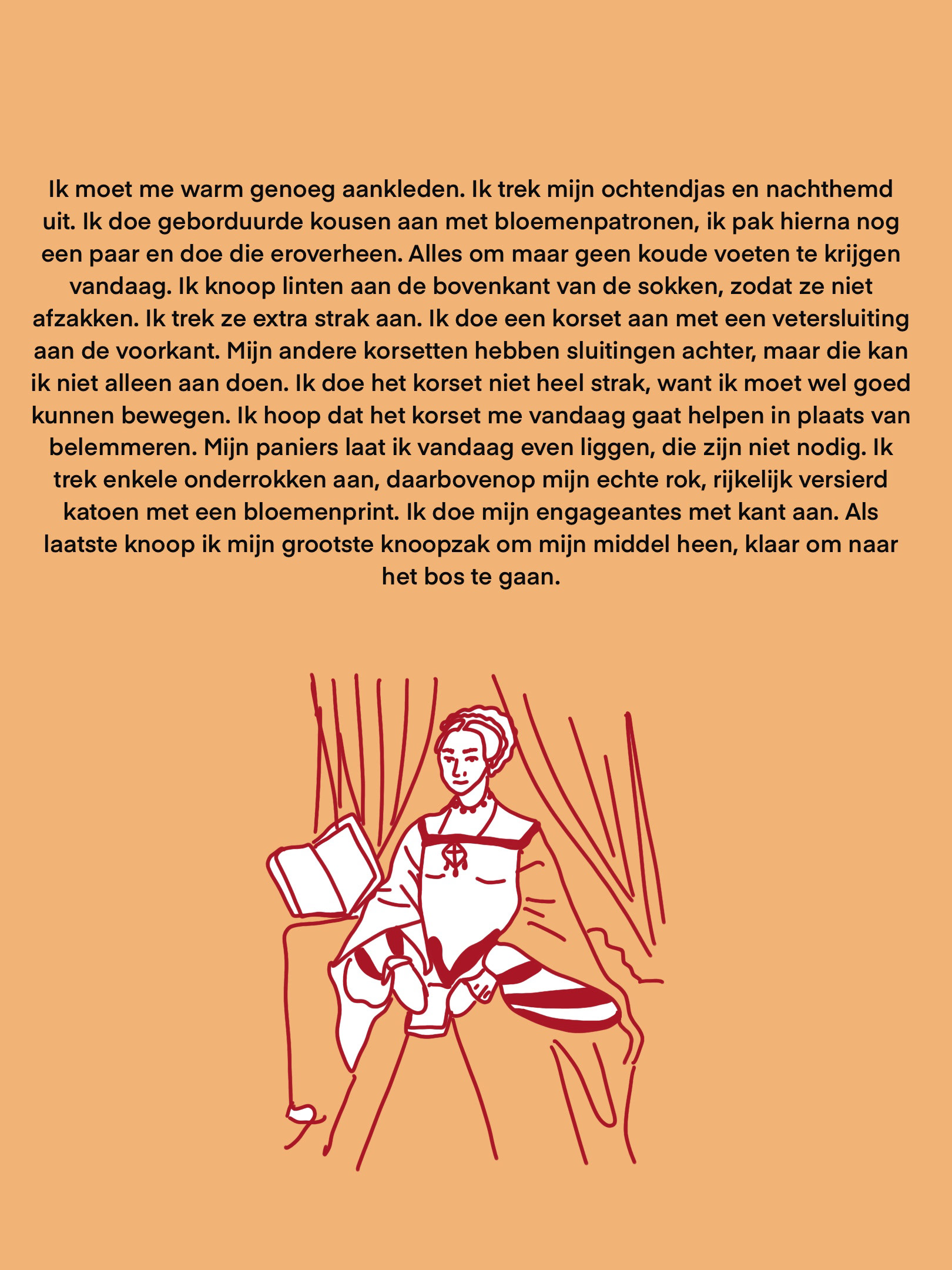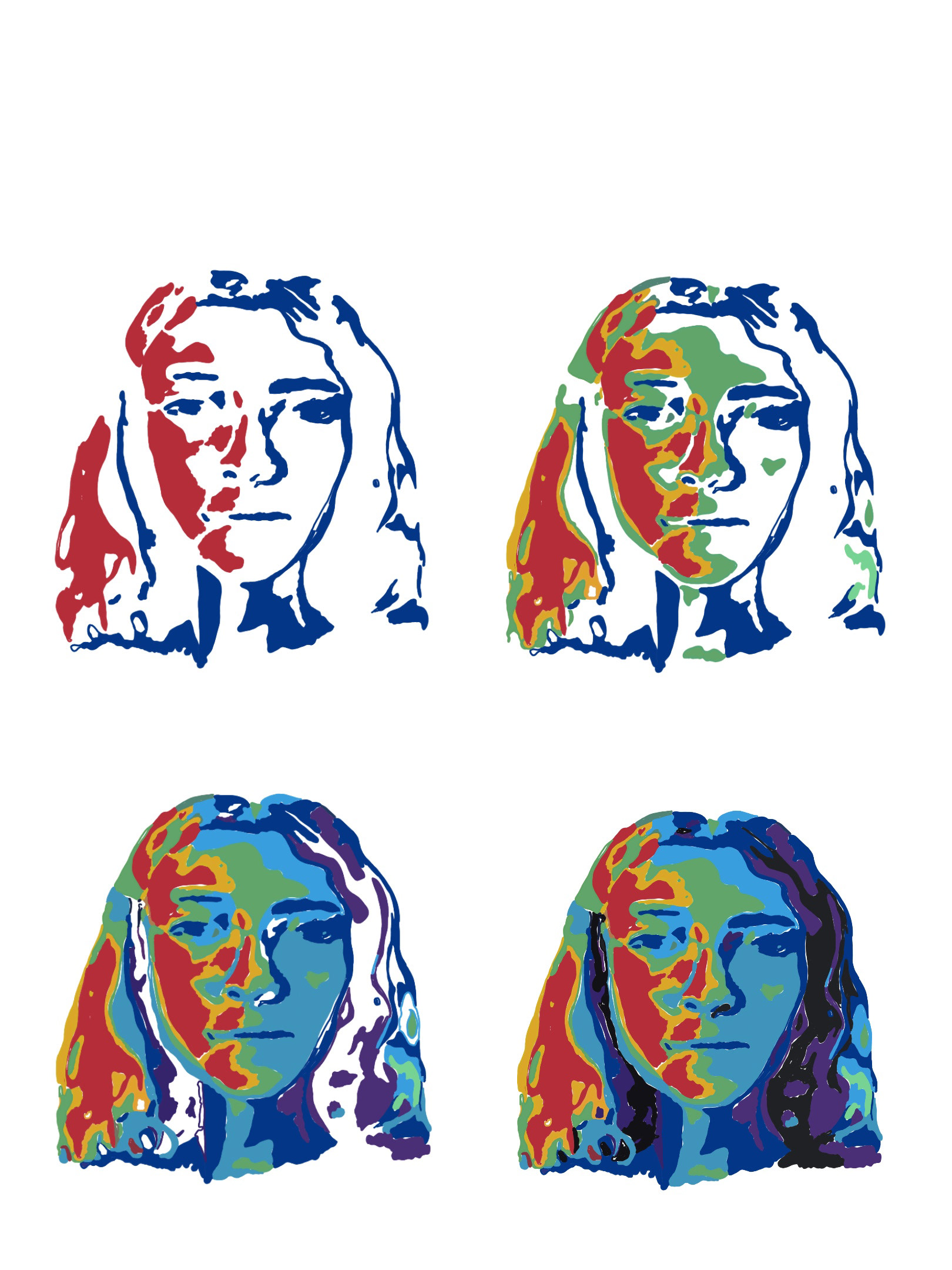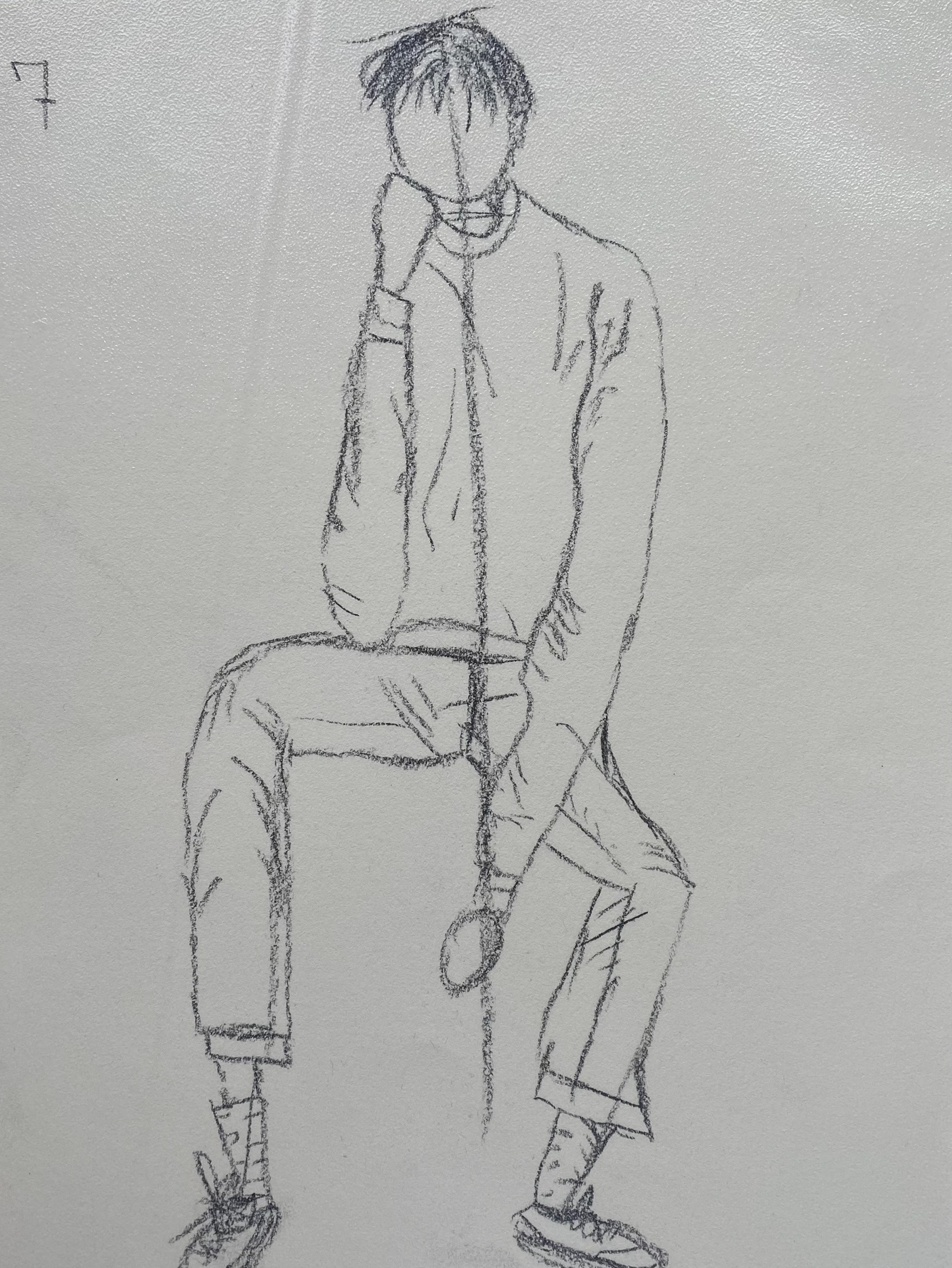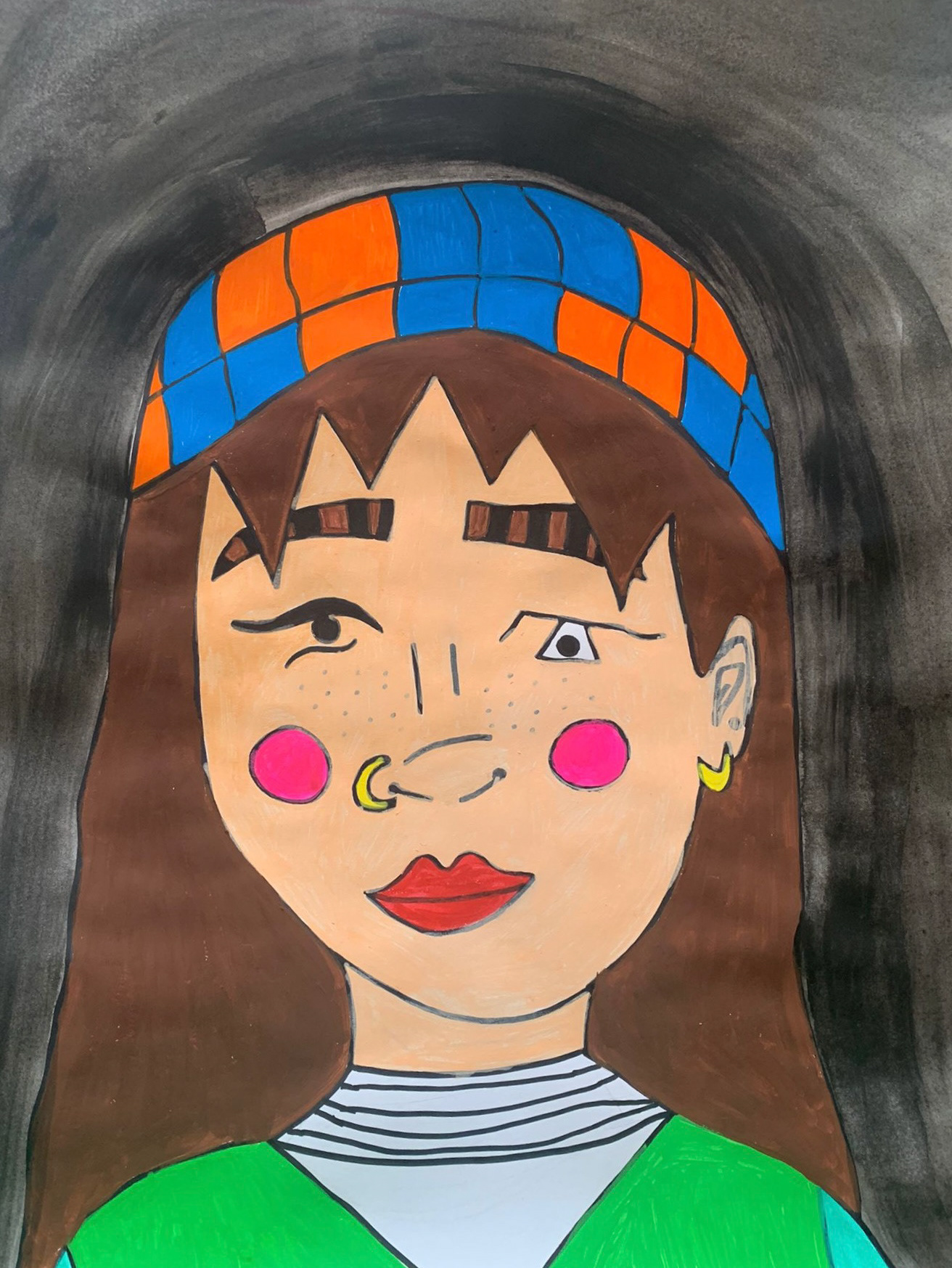For a historical research we had to start with a historical sleeve. I started with a bell sleeve and an enlarged version of it. After this we had to see how it was worn and from what time it came. I decided to investigate the ritual of dressing today and write a story about it.
To begin with, it is good to know that at that time, at least after children reached the age of four, there was no difference in types of clothing for children or adults.
Certain items of clothing used to have a different purpose than they do now. Take, for example, the corset and the slip dress. A classic pajama is nothing more than a matching suit made of smooth, comfortable fabric that was once meant to be worn indoors only. Nowadays, pajama-like garments also fall under the heading of home suits or loungewear. In any case, it is a special sounding word: pajama is a corruption of the Persian word Paydjameh (literally leg covering and referring to loose trousers that were worn loosely around the hips with a ribbon). The word 'pajama' entered the English vocabulary in the 19th century through Hindustani. The British settlers ensured that the originally Indian garment made the transition to Western culture.
Its basic function was against prudishness and the cold in the sixteenth century. Pajamas didn't exist yet. So it's not certain where people slept, but we think people wore nightcaps made of wool, linen, or cotton. Also a white linen nightgown that was also worn during the day, wide, with a collar and tied with ribbons. And also a night corset, but this is the question.
In the morning, after waking up, women put on a dressing gown for dressing. There was
no mention of underwear, as there were no underpants. They put on embroidered stockings with floral patterns up to knee length. The socks may have been held up by garters or knotted ribbons. They also put on a corset with a lacing at the back. Paniers, pictured opposite, skeletonized at the hips to make skirts wider. Several or more petticoats were placed over this, made of a thinner fabric than the 'real' skirt. A tablier, a loose triangular skirt part, were worn under distinctive frocks. Furthermore, engageantes, false decorated sleeves of linen or cotton, were decorated with lace. There was also often a lower sleeve, which added drama. Possibly women wore skirt pockets: These were loose ties that the woman could tie around her waist to keep small items. And finally the dress, which was laid over all layers, probably silk. Richly decorated motifs were combined with each other.

